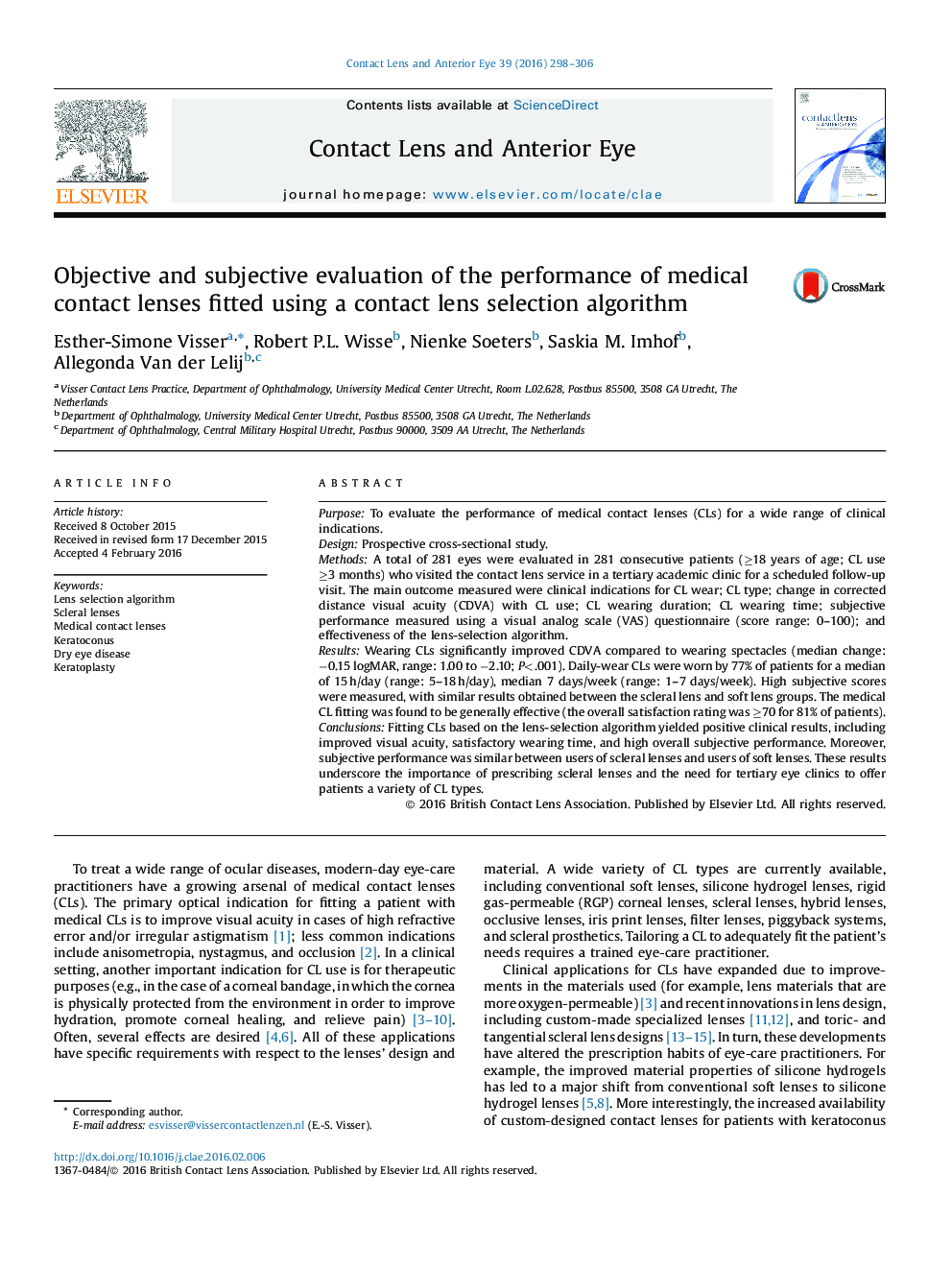| Article ID | Journal | Published Year | Pages | File Type |
|---|---|---|---|---|
| 2695848 | Contact Lens and Anterior Eye | 2016 | 9 Pages |
•Scleral lenses play an important role in medical contact lens practice.•Moreover, a wide range of lens types and tailored lens selection is essential.•Fitting contact lenses based on the lens-selection algorithm yielded positive results.•This algorithm can help practitioners select the appropriate contact lens type.
PurposeTo evaluate the performance of medical contact lenses (CLs) for a wide range of clinical indications.DesignProspective cross-sectional study.MethodsA total of 281 eyes were evaluated in 281 consecutive patients (≥18 years of age; CL use ≥3 months) who visited the contact lens service in a tertiary academic clinic for a scheduled follow-up visit. The main outcome measured were clinical indications for CL wear; CL type; change in corrected distance visual acuity (CDVA) with CL use; CL wearing duration; CL wearing time; subjective performance measured using a visual analog scale (VAS) questionnaire (score range: 0–100); and effectiveness of the lens-selection algorithm.ResultsWearing CLs significantly improved CDVA compared to wearing spectacles (median change: −0.15 logMAR, range: 1.00 to −2.10; P< .001). Daily-wear CLs were worn by 77% of patients for a median of 15 h/day (range: 5–18 h/day), median 7 days/week (range: 1–7 days/week). High subjective scores were measured, with similar results obtained between the scleral lens and soft lens groups. The medical CL fitting was found to be generally effective (the overall satisfaction rating was ≥70 for 81% of patients).ConclusionsFitting CLs based on the lens-selection algorithm yielded positive clinical results, including improved visual acuity, satisfactory wearing time, and high overall subjective performance. Moreover, subjective performance was similar between users of scleral lenses and users of soft lenses. These results underscore the importance of prescribing scleral lenses and the need for tertiary eye clinics to offer patients a variety of CL types.
